World
Mexicans with HIV/AIDS struggle with treatment access
Government in 2019 created new health care entity
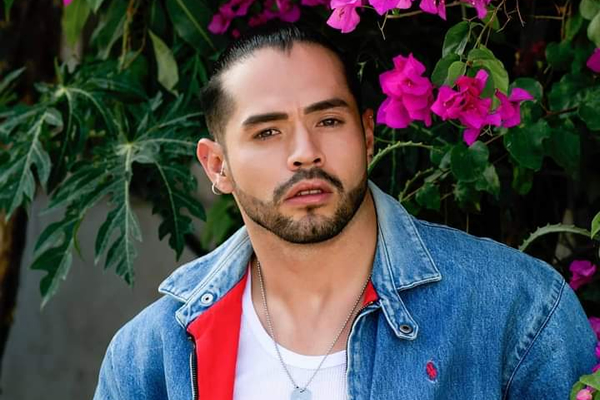
Roberto Navarro has been a dancer since he was 17. Jazz became his passion and he fell in love with classical dancing after he took many classes. And he began to teach four years later.
“I’m so happy when I teach dancing to my girls because they bring me so much joy, I feel like I help my girls to become better women, without noticing I’m some kind of a therapist,” Navarro told the Washington Blade.
He discovered the discipline of dancing in heels in 2014, which made him connect and explore more with his sexuality. He did, however, suffer a lot of bullying because of it.
Navarro — a 33-year-old gay man who is originally from Sahuayo de Morelos in Michoacán state — currently owns a dance salon. Navarro said he started to become an entrepreneur, but it hasn’t been easy because of the pandemic.
He was diagnosed with HIV in 2016. Navarro suffered from depression for several months after he learned his status.
“I woke up very overwhelmed in the morning thinking that I had to go to the hospital to make a long line of patients; to have blood drawn for fast screening tests,” he said. “We arrived at 7 in the morning and left until 1 in the afternoon.”
Navarro has been receiving treatment for almost five years, and he is still dancing.
“Subsequently, I went to my consultations every three or six months depending on my results,” he stated. “By the third month I was undetectable.”
Navarro started with Atripla, an antiretroviral drug he received through Mexico’s Seguro Popular, and he was undetectable a month later.
A shortage of Atripla forced a change to Biktarby after President Andrés Manuel López Obrador in 2019 scrapped Seguro Popular and created the Health Institute for Wellbeing (INSABI). The pharmaceutical company Gilead has said there are many counterfeit versions of the drug on the market.
Seguro Popular in 2018 had almost 52 million beneficiaries. The National Council for the Evaluation of Social Development Policy (CONEVAL) said INSABI at the end of 2020 had more than 34 million beneficiaries.
Antiretroviral drugs have been available in Mexico since 2003, although the Mexican health system is divided into various subsystems based on where one works.
- Institute of Social Security and Services for State Workers (ISSSTE)
- Mexican Institute of Social Security (IMS)
- INSABI (Health Institute for Wellbeing) that was previously known as the Seguro Popular
They vary in the time it takes to receive medication and the time for CD4 viral load tests. The availability of appointments with infectious disease specialists varies in each of the three public health systems.
People with INSABI will take longer to get tests and have access to doctors. It must also be recognized that everyone, in theory, has the possibility of accessing medicines, but it also depends on the states in which they live.
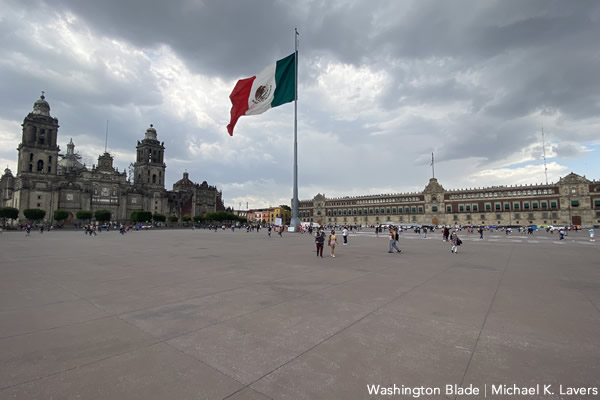
From Seguro Popular to INSABI
The number of people without access to healthcare in Mexico rose from 20 million to almost 36 million between 2018-2020. INSABI, more than a year after its creation, still does not completely cover the same amount as its predecessor.
INSABI is an independent agency through the Ministry of Health that aims to “provide and ensure the free provision of health services, medicines and other inputs associated with people without social security.” The General Health Law says it was to replace Seguro Popular, which was in place from 2004-2019.
“The situation for treatment right now, it’s quite complex, particularly because there have been many changes in the health department of Mexico, and this has to do with the fact that in 2003 when the Seguro Popular was established; there was an increase to comprehensive care for people living with HIV and resources for prevention strategies which are mainly handled through civil society organizations that obtained money from the government.” stated Ricardo Baruch, who has worked at the International Family Planning Federation for almost 15 years.
López,, who took office in 2018, sought to eliminate Seguro Popular, which was the mechanism by which access to antiretroviral drugs were given to most people living with HIV in the states with greater vulnerability. This change was done in theory to expand access for everyone, but the opposite happened.
There is less access due to the modification of purchasing mechanisms and a huge shortage throughout the country. Baruch says this situation has caused a treatment crisis across Mexico.
“The truth is that the Seguro Popular helped me a lot to have my treatments on time, what I do not like is that there is not enough staff to attend all the patients that we are waiting for our consultations,” said Erick Vasquez, a person who learned in February he is living with HIV.
Vasquez, 34, is an artist who works in Guadalajara and Playa del Carmen.
Vasquez did not have health insurance like other people through IMS. He obtained access to Seguro Popular through an organization that supports people with HIV, but he has to wait until October for his first appointment.
Vasquez, who has a very low viral load, in March began a job through which he obtained IMS. He had access to his treatments through it.
He received three months worth of Biktarvy at the end of June; one prescription for each month. He said the drug is not difficult to obtain.
“I have not had any problem with the medication, it is not difficult to get it when you are on the insurance, but there is still a long time left until October,” said Vasquez.
The cost of the antiretroviral treatment in Mexico is approximately $650 per month, and one bottle has only 30 pills.
“I have not had side effects, I have not had nausea, I don’t vomit, I take a pill daily, it is one every 24 hours,” Vasquez said. “I feel very well and I hope very soon to be undetectable.”
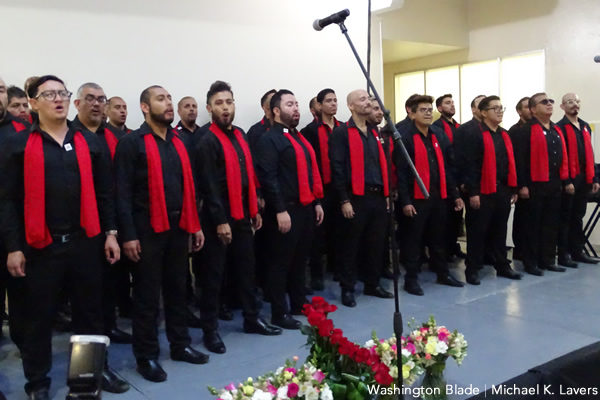
Infrastructure over health
Prevention resources were eliminated, and health resources today are used to finance the Felipe Ángeles International Airport at the Santa Lucía military base in Zumpango in Mexico state, a new refinery, the Mayan train and other major infrastructure projects. And this causes many people who want to access treatment not to receive them. It takes much
The cost of the work, including the land connected with the Mexico City International Airport and various military facilities, is set at 82,136,100,000 Mexican pesos and there are provisions to serve 19.5 million passengers the first year of operations, according to a report from the Secretariat of National Defense (SEDENA).
There are, on the other hand, far fewer HIV tests and this shortage has led to a much higher arrival of late-stage HIV cases and even AIDS in hospitals. This trend is particularly serious among transgender women and men who have sex with men.
“Here in Mexico we concentrate the HIV pandemic, and that we are at a time when this issue of shortages has not stabilized, that there is already more clarity in purchases, but it is well known that all these changes in health systems continue for a year over the years they cause the situation to be increasingly fragile and in the matter of migrants that previously there was certainty so that they could access medicines through the Seguro Popular, now there is a legal limbo for which in some states it depends: on the states, the clinic or social worker; whether or not they give you medications,” said Baruch.
“If you are not a resident or a national here in Mexico, this is a matter won for people in transit seeking political asylum or who had stayed in Mexico,” he added.
Migrants lack access to HIV treatment
Mexico is located between the three regions with the world’s highest rates of HIV: the Caribbean, Central America, and the U.S. This has been used as a foundation for a culture of hatred against migrants, according to Siobhan McManus, a biologist, philosopher, and researcher at the Center for Interdisciplinary Research in Sciences and Humanities of the National Autonomous University of Mexico.
The lack of opportunities, violence and climate change that forces people whose livelihoods depend on agriculture to abandon their homes prompts migration from Central America.
Most migrants — LGBTQ or otherwise — experience violence once they arrive in Mexico.
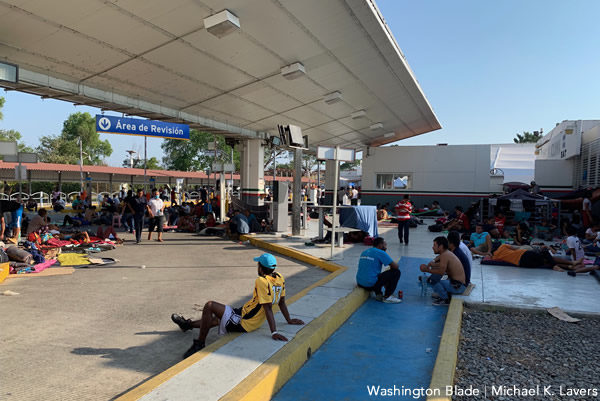
Chiapas and other states have created an extensive network of clinics known by the Spanish acronym CAPASITS (Centro Ambulatorio para la Prevención y Atención en SIDA e Infecciones de Transmisión Sexual) that are specific HIV and STD units in major towns. They are often within close proximity to most people’s homes.
Sonora and Chihuahua states, which border the U.S., often have such clinics in only one or two cities. This lack of access means people will have to travel up to six hours to access these treatments.
People who have already been receiving treatment for a long time were previously given up to three months of treatment. They now must travel every month to receive their medications because of the shortages.
PrEP available in Mexico
The shortage of medical drugs for people who already live with HIV is a current issue for the Mexican government, but they have made free PrEP available for those who want to prevent themselves from the virus.
Ivan Plascencia, a 24-years old, who lives in Guadalajara, the capital of Jalisco state , has been using PrEP for several years since he became sexually active and he never had any complaints about the medication. Plascencia instead recommends his close friends to take advantage of this prevention drug that is available in one of the CAPASITS where he lives.
Post-pandemic screening tests
There are an estimated 260,000 people in Mexico who are living with HIV. Upwards of 80 percent of them knew their status before the COVID-19 pandemic.
The number of new cases that were detected in 2020 were 60 percent less than the previous year, but this figure does not mean HIV rates have decreased.
In Jalisco, which is one of Mexico’s most populous states with upwards of 8 million people, there was a 40 percent increase in positive cases in 2020 compared to 2019. This increase has put a strain on service providers.
Colombia
Claudia López criticizes Trump over threats against Colombian president
Presidential candidate would become country’s first lesbian head of government

BOGOTÁ, Colombia — Colombian presidential candidate Claudia López has criticized President Donald Trump after he suggested the U.S. will target Colombian President Gustavo Petro.
“Colombia is very sick, too, run by a sick man, who likes making cocaine and selling it to the United States, and he’s not going to be doing it very long,” Trump told reporters on Air Force One on Sunday.
Trump made the comments a day after American forces carried out an overnight operation and seized now former Venezuelan President Nicolás Maduro and wife, Cilia Flores, at their home in Caracas, the Venezuelan capital.
Maduro and Flores on Monday pleaded not guilty to federal drug charges in New York.
Petro is a former Bogotá mayor and senator who was once a member of the M-19 guerrilla movement that disbanded in the 1990s. He has urged Colombians to take to the streets and “defend national sovereignty.”
“Colombians are the ones who decide who governs Colombia,” said López on her X account. “President Gustavo Petro won free elections and has a constitutional mandate.”
López did not mention Trump by name in her comment.
The first-round of Colombia’s presidential election will take place on May 31. The country’s 1991 constitution prevents Petro from seeking re-election.
López in 2019 became the first woman and first lesbian elected mayor of Bogotá, the Colombian capital and the country’s largest city. She took office on Jan. 1, 2020, less than a month after she married her wife, Colombian Sen. Angélica Lozano.
“This year we will decide at the polls what direction (the country) is heading and what leadership will advance Colombia,” said López in her X post. “Supporting soft dictatorships and attacking democracies is an absurd and unacceptable political action by the United States towards Colombia, Venezuela, and Latin America.”
Quién gobierna en Colombia lo decidimos los colombianos.
El presidente @petrogustavo ganó unas elecciones libres y tiene un mandato constitucional. Este año decidiremos en las urnas qué rumbo y a cargo de qué liderazgo avanza Colombia.
Sostener dictablandas y atacar democracias… https://t.co/K61G2QUcck— Claudia López Hernández (@ClaudiaLopez) January 5, 2026
López would be Colombia’s first female president if she wins the election. López would also become the third openly lesbian woman elected head of government — Jóhanna Sigurðardóttir was Iceland’s prime minister from 2009-2013 and Ana Brnabić was Serbia’s prime minister from 2017-2024.
The LGBTQ+ Victory Institute in 2024 honored López at its annual International LGBTQ Leaders Conference in D.C. The Washington Blade interviewed her during the gathering.
Colombia
Blade travels to Colombia after U.S. forces seize Maduro in Venezuela
Former Venezuelan president, wife seized on Saturday
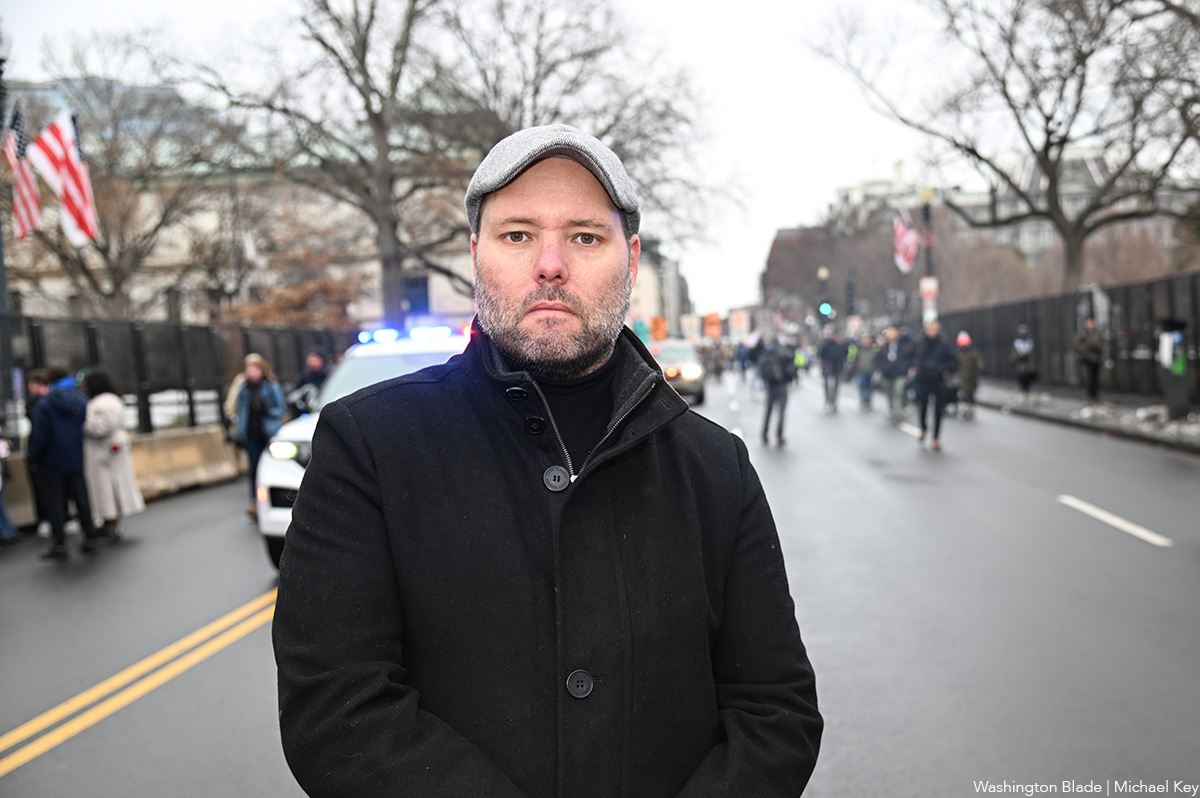
Washington Blade International News Editor Michael K. Lavers will be on assignment in Colombia through Jan. 10.
Lavers arrived in Bogotá, the Colombian capital, on Monday. American forces two days earlier carried out an overnight operation and seized now former Venezuelan President Nicolás Maduro and wife, Cilia Flores, at their home in Caracas, the Venezuelan capital.
Maduro and Flores on Monday pled not guilty to federal drug charges in New York.
Maduro in 2013 became Venezuela’s president after his predecessor, Hugo Chávez, died.
The country’s ongoing economic and political crises have prompted millions of Venezuelans to flee to neighboring Colombia and other countries throughout Latin America and around the world. The seizure of Maduro and Flores threatens to further destabilize Venezuela and the broader region.
The Washington Blade, which has reported from Colombia several times over the last decade, has interviewed several LGBTQ Venezuelan opposition leaders. The Blade has also extensively covered the plight of LGBTQ Venezuelans and Venezuelans with HIV/AIDS who have left their country because of violence, persecution, discrimination, and a lack of medications.
“LGBTQ Venezuelans in Colombia and elsewhere have a unique perspective on the events that have transpired in their homeland over the last two days, and how they continue to reverberate throughout the hemisphere,” said Lavers. “It is critically important for the Washington Blade to document the situation in the region as it continues to evolve and to show how it will impact LGBTQ communities.”
“The Blade has a long history of covering the plight of LGBTQ communities around the world and this trip reflects our commitment to the region,” said Blade Editor Kevin Naff. “This reporting will help shine a light on the challenges facing LGBTQ Venezuelans and those living with HIV and how they are coping with the unfolding events.”
Lavers last reported from Colombia in 2021. His coverage included a trip to Cúcuta, a Colombian city that is on the country’s border with Venezuela.
World
Top 10 international LGBTQ news stories of 2025
Marriage progress in Europe; trans travel advisories depress WorldPride attendance
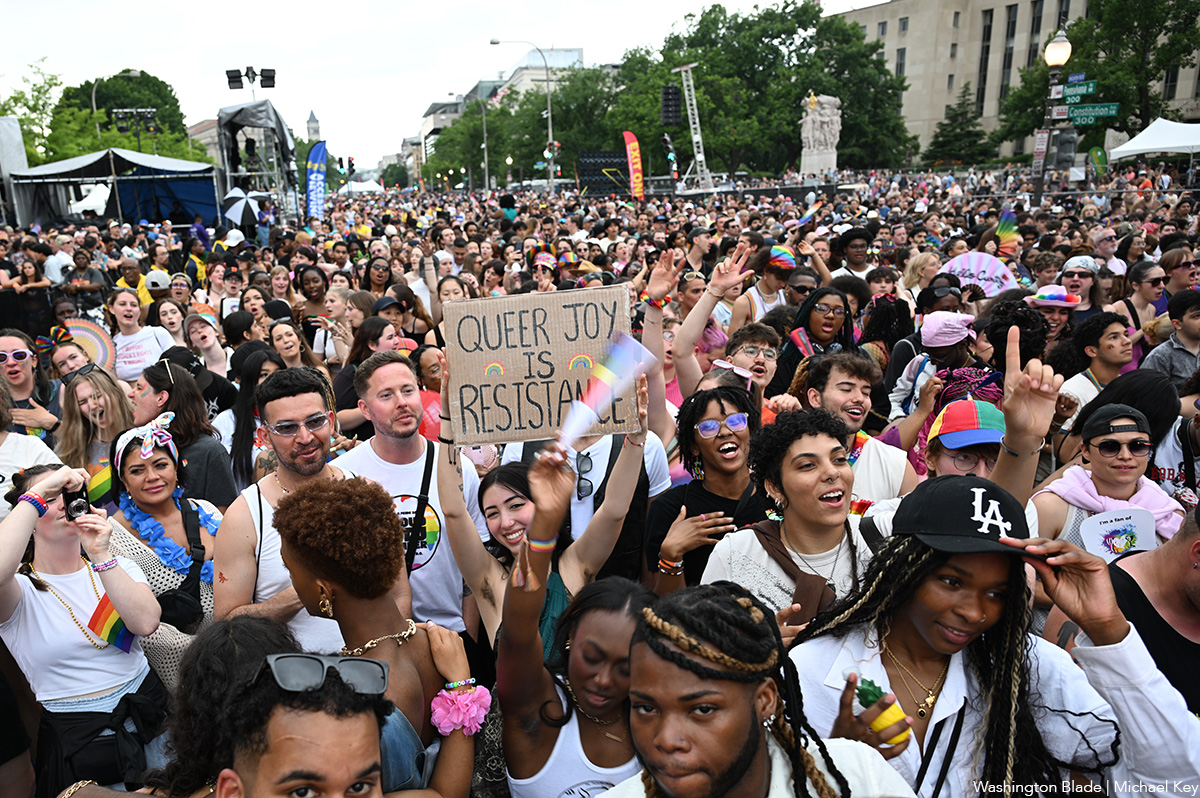
The Trump-Vance administration and its policies had a significant impact on the global LGBTQ rights movement in 2025. War, anti-LGBTQ crackdowns, protests, and legal advances are among the other issues that made headlines around the world over the past year.
Here are the top international stories of 2025.
10. Australia ends ban on LGBTQ blood donors
Australia on July 14 ended its ban on sexually active LGBTQ people from donating blood.
“Lifeblood (the Australian Red Cross Blood Service) has been working to make blood and plasma donation more inclusive and accessible to as many people as possible, whilst maintaining the safety of the blood supply,” said the Australian Red Cross Blood Service in a press release that announced the new policy.
Lifeblood Chief Medical Officer Jo Pink said the new policy will allow 24,000 additional people to donate blood each year.
9. Kenyan judge rules gov’t must legally recognize trans people
A Kenyan judge on Aug. 20 ruled his country’s government must legally recognize transgender people and ensure their constitutional rights are protected.
Justice Reuben Nyakundi of the Eldoret High Court in western Kenya ruled in favor of a trans athlete who was arrested in 2019 and forced to undergo a medical examination to determine her gender. The 34-year-old plaintiff who is a board member of Jinsiangu, a trans rights organization, said authorities arrested her at a health facility after they claimed she impersonated a woman.
“This is the first time a Kenyan court has explicitly ordered the state to create legislation on transgender rights, and a first in the African continent,” noted Jinsiangu in a statement. “If implemented, it could address decades of legal invisibility and discrimination faced by transgender persons by establishing clear legal recognition of gender identity, protection against discrimination in employment, housing, healthcare, and education, and access to public services without bias or harassment.”
8. U.S. withdraws from UN LGBTI Core Group
The U.S. in 2025 withdrew from the U.N. LGBTI Core Group, a group of U.N. member states that have pledged to support LGBTQ and intersex rights.
A source told the Washington Blade the U.S. withdrew from the Core Group on Feb. 14. A State Department spokesperson later confirmed the withdrawal.
“In line with the president’s recent executive orders, we have withdrawn from the U.N. LGBTI Core Group,” said the spokesperson.
7. Wars in Gaza, Ukraine continue to make headlines
Israeli airstrikes against Iran prompted authorities in Tel Aviv to cancel the city’s annual Pride parade that was scheduled to take place on June 13.
The airstrikes prompted Iran to attack Israel with drones and missiles. One of them destroyed Mash Central, a gay bar that was located a few blocks from the U.S. Embassy in Tel Aviv. Marty Rouse, a longtime activist who lives in Maryland, was in Israel with the Jewish Federations of North America when the war began. He and his group left the country on June 15.
Bet Mishpachah, an LGBTQ synagogue in D.C., welcomed the tenuous ceasefire between Israel and Hamas that took effect on Oct. 10, roughly two years after Hamas militants killed upwards of 1,200 people and kidnapped more than 200 others when they launched a surprise attack on the country.
In Ukraine, meanwhile, the war that Russia launched in 2022 drags on.
6. Int’l Criminal Court issues arrest warrants for Taliban leaders
The International Criminal Court on July 8 issued arrest warrants for two top Taliban officials accused of targeting LGBTQ people, women, and others who defy the group’s strict gender norms.
The warrants are for Hibatullah Akhundzada, the Taliban’s supreme leader, and Afghanistan Chief Justice Abdul Hakim Haqqani.
Karim Khan, the ICC’s chief prosecutor, in January announced a request for warrants against Taliban officials over their treatment of women and other groups since they regained control of Afghanistan in 2021. The request marked the first time the court specifically named LGBTQ people as victims in a gender persecution case before it.
5. Hundreds of thousands defy Budapest Pride ban
More than 100,000 people on June 28 defied the Hungarian government’s ban on public LGBTQ events and participated in the 30th annual Budapest Pride parade.
Former Irish Prime Minister Leo Varadkar, who is his country’s first openly gay head of government, and openly gay MEP Krzysztof Śmiszek, who was previously Poland’s deputy justice minister, are among those who participated in the march.
Hungarian Prime Minister Viktor Orbán and his Fidesz-KDNP coalition government have faced widespread criticism over its anti-LGBTQ crackdown.
Hungarian lawmakers in March passed a bill that bans Pride events and allow authorities to use facial recognition technology to identify those who participate in them. MPs in April amended the Hungarian constitution to ban public LGBTQ events.
4. LGBTQ delegation travels to Vatican to meet Pope Leo after Francis dies
Pope Francis died on April 21.
The Vatican’s tone on LGBTQ and intersex issues softened under the Argentine-born pope’s papacy, even though church teachings on homosexuality and gender identity did not change.
The College of Cardinals on May 8 chose Pope Leo XVI, an American cardinal from Chicago who was bishop of the Diocese of Chiclayo in Peru from 2015-2023, to succeed Francis.
Leo on Sept. 1 met with the Rev. James Martin, a Jesuit priest who founded Outreach, a ministry for LGBTQ Catholics. A gay couple from D.C. — Jim Sweeney and the Rev. Jason Carson Wilson — are among those who took part in an LGBTQ pilgrimage to the Vatican a few days later that coincided with the church’s year-long Jubilee that began last Christmas Eve when Francis opened the Holy Door.
3. EU’s top court rules states must recognize same-sex marriages
The European Union’s top court on Nov. 25 ruled member states must recognize same-sex marriages legally performed in other member states.
The EU Court of Justice in Luxembourg ruled in favor of a couple who challenged Poland’s refusal to recognize their German marriage.
The couple who lives in Poland brought their case to Polish courts. The Polish Supreme Administrative Court referred it to the EU Court of Justice.
“Today’s ruling of the Court of Justice of the EU is of key importance not only for the couple involved in the case, but also for the entire LGBT+ community in Poland,” said the Campaign Against Homophobia, a Polish LGBTQ and intersex rights group.
2. U.S. funding cuts devastate global LGBTQ community
The Trump-Vance administration’s decision to cut U.S. foreign aid spending in 2025 has had a devastating impact on the global LGBTQ rights movement.
Council for Global Equality Chair Mark Bromley noted to the Blade the U.S. historically funded roughly a third of the global LGBTQ rights movement.
Groups around the world — including those that worked with people with HIV/AIDS — that received U.S. funding had to curtail programming or close altogether. LGBTQ+ Victory Institute President Elliot Imse earlier this year noted the global LGBTQ rights movement in 2025 was set to lose more than $50 million.
“It is a catastrophe,” he said.
1. Countries boycott WorldPride amid travel advisories
Canada and a number of European countries in 2025 issued travel advisories for trans and nonbinary people who planned to visit the U.S.
The advisory the Danish government issued notes President Donald Trump’s executive order that bans the State Department from issuing passports with “X” gender markers. It also notes “two gender designations to choose from: male or female” when applying for an ESTA (Electronic System for Travel Authorization) or visa for the U.S.
Egale Canada, one of Canada’s largest LGBTQ advocacy organizations, in February announced its members would not attend WorldPride, which took place in D.C. from May 17-June 8, or other events in the U.S. because of the Trump-Vance administration’s policies. Other advocacy groups and activists also did not travel to the U.S. for WorldPride.
InterPride, which coordinates WorldPride, also issued its own travel advisory for trans and nonbinary people.




















